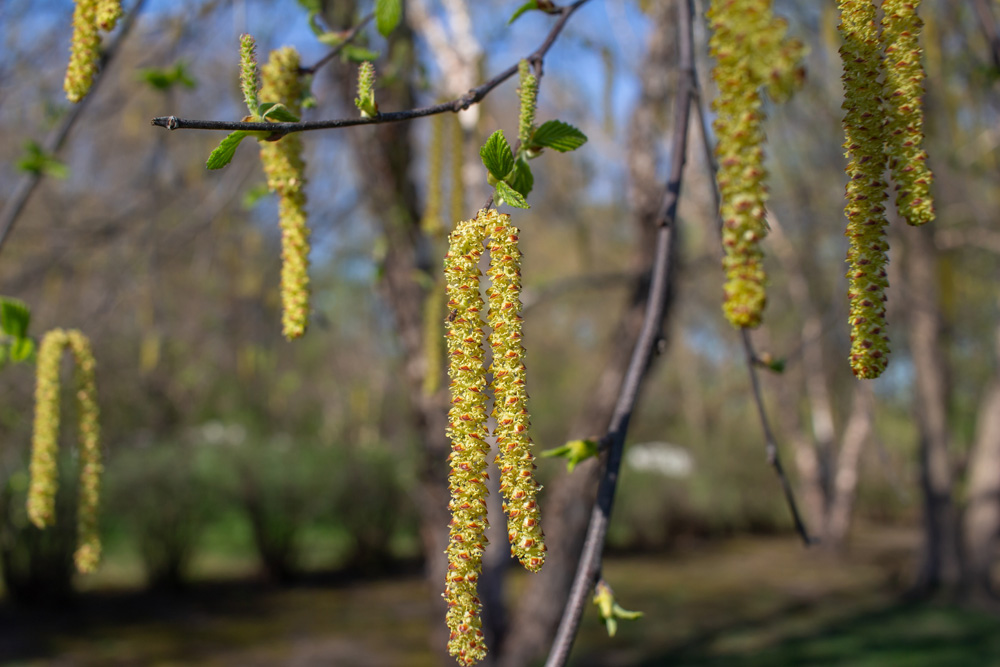Betula nigra
Common Name:
River birch

General information:
River birch can grow 50 to 90 feet tall but is often seen 40 to 50 feet. It normally grows with a central leader and small- diameter, dark-coloured lateral branches. It has a narrow, oval to pyramidal crown when young, spreading wider with age as several branches become dominant. It lacks the white trunk bark associated with other birches but is distinguished by reddish, brown bark peeling off in film-like papery curls providing interest all year round. River birch can be easily trained with one central leader or as a multi-stemmed tree. Some nurseries plant two or three trees together to form a clump, but these trunks will not fuse into one strong trunk. Should be grown more as a single-trunked specimen. Branches droop particularly when they are wet, so regular pruning in the early years will be required to remove lower branches when they are located close to areas where clearance is needed.
The river birch occurs along stream beds from Massachusetts to Florida, zones 4 through 9A. It prefers moisture, but will tolerate dry soils.
Birches are much loved for bonsai because of their elegant beauty, but they do not take easily to pot culture. Their short lives are also seen as a disadvantage; however, some birches will live as long as 300 years.
Family:
Betulaceae
Lighting:
Unlike most birches, the river birch prefers partial shade, and may suffer leaf burn if kept in full summer sun.
Temperature:
River birch thrives in zones 5-8. It may need protection from cold winds to prevent twig die-back.
Watering:
The river birch thrives in wet areas, and appreciates lots of water. Feeding: Wait one month after leaves open, then feed every two weeks till the end of summer.
Pruning and wiring:
River birch leaves will reduce significantly, to 1 1/4 inches, perhaps even smaller. Unlike many birch species, river birch does not seem to share the common problem of excessive “bleeding” after pruning, which makes this species easier to work with as a bonsai. Pruning upward branches at the second internode will encourage foliage to extend away from the trunk, opening the branch structure and keeping foliage from massing on branches parallel to the trunk.
Pests and diseases:
Pests:
No pests are of major concern. Resistant to bronze birch borer.
Diseases:
Leaf spots; chlorosis on soils with a high pH.
Repotting:
Birches younger than age 10 will need repotting every two-three years. Older trees need repotting as necessary. Repot in spring, before bud burst, using rich, acidic soil mix. Care should be taken to protect the bark when wiring. The tree may sucker from the roots; these should be removed quickly to keep from sapping the vigour of the main trunk.
Bibliography:
Tomlinson’s “Complete Book of Bonsai”
Resnick’s “Bonsai”
“The Creative Art of Bonsai” by Isabelle and Remy Samson
“Simon and Schuster’s Guide to Bonsai”
Species information from Mitchell’s “American Nature Guides: Trees,” and “The Hearst Garden Guide to Trees and Shrubs.”
USDA Fact Sheet ST-94
Compiled by Sabrina Caine Edited by Thomas L. Zane
